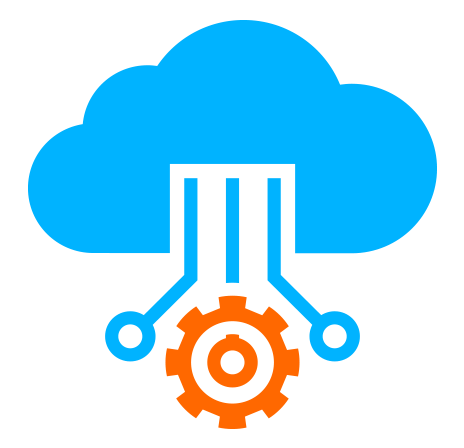 Server
Colocation
Server
Colocation
 CDN
Network
CDN
Network
 Linux Cloud
Hosting
Linux Cloud
Hosting
 VMware Public
Cloud
VMware Public
Cloud
 Multi-Cloud
Hosting
Multi-Cloud
Hosting
 Cloud
Server Hosting
Cloud
Server Hosting
 Kubernetes
Kubernetes
 API Gateway
API Gateway

We’re living in an era where information is more abundant than ever—but ironically, finding the right information at the right time is harder than it looks. In fact, according to IDC, knowledge workers spend about 2.5 hours each day searching for information—that’s nearly 30% of the workday lost in just looking for answers.
The problem isn’t access. The problem is relevance.
This is where RAG AI (Retrieval-Augmented Generation) steps in to change the game. Unlike traditional large language models (LLMs) that generate responses based only on pre-trained data, RAG combines retrieval mechanisms with generation capabilities, enabling real-time, contextually rich, and accurate information delivery.
And when paired with a robust cloud infrastructure like Cyfuture Cloud, implementing RAG AI becomes not just viable but scalable for businesses of all sizes.
So let’s dive into how you can actually implement RAG AI—from architecture and cloud hosting choices to tools and real-world use cases—without getting buried under complex technical jargon.
Let’s break this down simply.
RAG stands for Retrieval-Augmented Generation, a technique that combines the power of search engines with the language fluency of LLMs like GPT or BERT.
Here’s how it works:
Retrieve: When a user asks a question, the system retrieves the most relevant documents or content chunks from a knowledge base.
Augment: These retrieved documents are fed into an LLM.
Generate: The LLM uses this external information to generate a more accurate, context-rich answer.
This dual-system approach makes RAG ideal for applications like:
Enterprise knowledge bases
Customer support automation
Legal and compliance documentation search
Academic research tools
Internal organizational search platforms
While standalone language models are impressive, they often hallucinate—meaning they can generate plausible but incorrect answers. RAG dramatically reduces this by anchoring the model’s outputs to factual, up-to-date data sources.
Key benefits include:
Factually grounded answers
Access to private, proprietary knowledge bases
Dynamic updates without retraining
Scalability through cloud-based deployment
Now that we understand the what and why, let’s get into the how—how to actually implement RAG AI into your existing tech stack, preferably using a cloud platform like Cyfuture Cloud for cost-efficiency and scale.
The very first step is deciding where your RAG model will live. Running such models requires GPU-powered servers, high-performance indexing, and scalable hosting.
Cyfuture Cloud provides the perfect foundation:
AI-optimized cloud servers with GPU support
Secure hosting options for enterprise-grade compliance
Serverless architecture support for deployment flexibility
Elastic scaling to manage traffic spikes during retrieval-heavy workloads
By deploying RAG on Cyfuture Cloud, you avoid the overhead of maintaining physical servers while also tapping into a powerful, AI-ready infrastructure.
The retrieval component of RAG relies heavily on having a well-structured knowledge base. This is usually broken down into chunks using techniques like text embeddings and Ai vector databases.
Here’s what to do:
Break your documents into small, retrievable sections (100-500 tokens each).
Use embedding models like OpenAI's Ada, Sentence-BERT, or FAISS-based transformers to convert each chunk into a vector.
Store these vectors in a vector database like Pinecone, Weaviate, or a custom solution hosted on Cyfuture Cloud.
Pro Tip: Use semantic search algorithms to ensure the retrieval system understands context and not just keywords.
Once your data is chunked and embedded, the retrieval pipeline does the heavy lifting. When a user query comes in, it:
Embeds the query into the same vector space
Searches for the nearest matches in your vector database
Returns the top N relevant chunks
These retrieved chunks become the “context” for the generative model.
Make sure your retrieval pipeline is containerized using Docker or Kubernetes. These can be easily deployed on cloud servers offered by Cyfuture Cloud for quick scaling.
You now need to connect the retrieved content with a language generation model.
Options include:
Open-source models like LLaMA, GPT-J, or Falcon
API-based services like OpenAI or Cohere
Private-hosted models on Cyfuture Cloud for data-sensitive use cases
If you want more control, fine-tune the LLM on your organization’s tone or style of communication.
Ensure low-latency hosting and optimized inference runtimes to maintain responsiveness, which is especially crucial if you're using RAG for real-time support systems.
Once the backend is ready, plug it into your interface—this could be a chatbot, search bar, or web-based document assistant. Cyfuture Cloud provides SDKs and APIs that make integration with your web and mobile apps seamless.
Bonus: Use analytics and logging tools to capture what users are searching for and continuously optimize retrieval accuracy.
Large organizations have huge internal document repositories. RAG-powered assistants help employees get instant, accurate answers from policies, HR guidelines, training docs, etc.—all hosted securely via cloud servers.
Instead of hard-coded scripts or traditional chatbots, RAG bots deliver dynamic answers pulled from real-time databases and past tickets. With Cyfuture Cloud hosting, these bots scale effortlessly with traffic.
In legal research, precision matters. RAG systems retrieve specific clauses and precedents from thousands of legal documents, reducing man-hours significantly.
Doctors can use RAG to pull medical literature or patient history insights within seconds—helping in diagnosis or prescription recommendations.
No system is perfect, and RAG AI comes with its own challenges:
Latency in real-time systems: Optimize with caching and serverless deployment on cloud infrastructure.
Data privacy concerns: Host sensitive RAG systems on private cloud environments like Cyfuture’s Virtual Private Cloud.
Continuous improvement: Regularly re-index your database to incorporate new documents and refine embeddings.
In the age of information overload, retrieval is just as important as generation—possibly even more. With RAG AI, businesses can finally move beyond generic chatbots and static search systems to deliver context-aware, accurate, and actionable responses.
Whether you're running a legal firm, a healthcare platform, or an enterprise SaaS product, implementing RAG AI on a reliable cloud like Cyfuture Cloud gives you the tools to scale smarter.
With serverless hosting, GPU-optimized AI infrastructure, and enterprise-grade security, Cyfuture Cloud is enabling the next wave of intelligent applications.
Smarter information retrieval isn’t a luxury anymore. It’s the new baseline. And with RAG AI, you can stay ahead—not just keep up.

Let’s talk about the future, and make it happen!
By continuing to use and navigate this website, you are agreeing to the use of cookies.
Find out more


